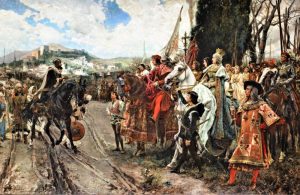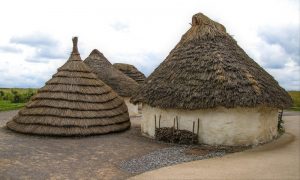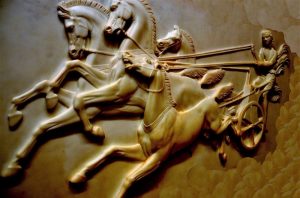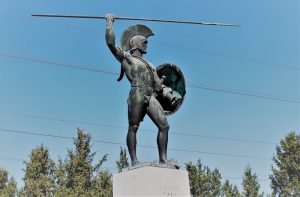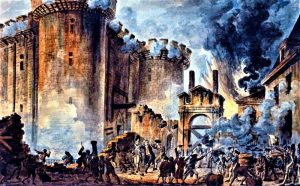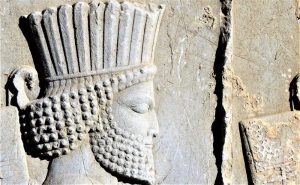Medical Wars
It was 546 B.C. when Ionia, a territorial entity made up of Greek cities, was conquered by Cyrus, the Persian king, making it part of the Persian Empire. For many years Ionian cities were greatly affected by the Persian invasion and developed a resentment that would trigger a series of war clashes to regain their freedom. These battles are known as Medical Wars and their impact and scope was marked in ancient history as one of the greatest armed conflicts between two empires, the Persian, in conquest of Greek territory and the Hellenic empire in search of freedom of their lands.
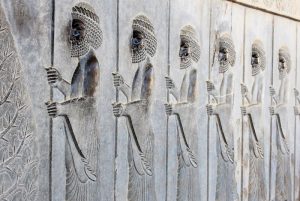
Interesting data
- Dates: Between 492 B.C. and 490 B.C. (First Medical War), 480 B.C. to 479 B.C. (Second Medical War) and from 479 B.C. to 449 B.C. (Third Medical War)
- Facing Groups: Greek Peoples and the Persian Empire
What were the Medical Wars?
Medical Wars were armed clashes between the Achaean, Ionian, Dorian and Aeolian Greek peoples against the Persian Empire in the 5th century BC. The adjective "Medical" is given to these battles because Greeks used to call Meda or Medo to the Persian Empire conquered by Cyrus II. The Medical Wars developed in three moments: the first was between 492 and 490 B.C. The most representative battle of this war was the Battle of Marathon. The second Medical War took place between the years 492-479 and its most emblematic battles are: Thermopylae, Salamina and Platea. The third and last of the Medical Wars took place between 479 and 449 BC. The Eurydome River Battle ended the conflict between Persians and Greeks with a peace agreement between the two nations.
Causes of Medical Wars
The cities that made up Ionia were invaded and surrendered by the Persian Empire from 546 B.C. when these were taken by King Cyrus. Darius I son, the successor to Cyrus throne, maintained the Persian Empire’s dominion in Ionia and also the Ionians discontent, who suffered the oppression of the new Persian monarch and the invasion of the Phoenicians on their lands to take possession of their economic resources and trading areas.
In 499 B.C. Aristagoras, the tyrant – placed by the Persians in Miletus to subdue the Ionian cities – in his ambition for power, takes advantage of the Ionian resentment and asks Athens for support to confront the Persian Empire. Athens and Eretria give their support for the combat, but it was not enough to beat the Persians. This results in Greek cities like Miletus and the Greek army destroyed in the Lade battle.
Darius I was very upset by the Greek attack and decided to give a lesson against the Greeks by throwing his army against the Greeks who participated in liberating Ionia. This marked the beginning of the first Medical War in 492 B.C.
First Medical War
Date: Between 492 B.C. and 490 B.C.
Confronted groups: Greek city states (Thrace, Macedonia, Cyclades, Euboea, Attica) against the Persian army of Emperor Darius I.
Most representative battle: Marathon
Marathon Battle
In September 490 B.C. Marathon Battle takes place. Miltiades leads the Greek army in this confrontation against the Persians commanded by Datis.
This battle is won by the Greeks because of their war tactics (in which it is possible to speak about the tweezers tactic, where the enemy is attacked by both sides and front) and for having a combat terrain domain, as well as a patriotic sense of freedom that motivated the Greeks to give everything for victory.
Two years later 488 B.C. Miltiades dies, and Themistocles takes his place as general of Greek armies.
In 481 B.C., Athens and Sparta together with other Greek cities sign a military pact to defend themselves from the Persian empire.
Second Medical War
Date: Between 480 B.C. and 479 B.C.
Confronted groups: Greek Cities states (Thrace, Thessaly, Boeotia, Attica and Ionia) against the Persian army of Xerxes I
Most representative battles: Las Thermopiles, Salamina and Platea.
After Darius I’s death, his son Xerxes, takes the reign of Persia and decides to continue attacking the Greeks, but before starting the war, he sends his ambassadors to ask the Greeks to give him land and water, as a sign of submission to his reign. The Athenians and Spartans responded to this request by throwing the Persian ambassadors into a well. This fact, once again, takes up the armed confrontations between the Persian empire and the Greeks, but on this occasion there will be three battles which will be decisive in determining which side will win the war.
Thermopylae Battle
King Xerxes advances to Greece with 250,000 soldiers. According to Herodotus, to cross the Hellespont, the Persian king built a bridge with his boats, but a storm destroyed it and Xerxes gave the order to give a thousand lashes to the sea as a lesson to the waters that had collapsed his bridge.
he Greeks, knowing the terrain through which the Persians arrived, decided to stop them in the Thermopylae gorge (name meaning “Hot Doors”).
The commander of the Greek armies was the Spartan king Leonidas I, who fought against the Persians with 300 soldiers and 1000 men who were not warriors by profession.
Spartans knew how to fight against the Persians until a Greek traitor named Efialtes showed King Xerxes how to attack the Greeks from the rear and win this battle.
Find out more about the Battle of Thermopylae here.
Salamina Battle
After Xerxes wins the battle against the Spartans, he advances to Athens to destroy the Acropolis with an army commanded by Mardonius.
Themistocles manages to lead an attack by sea from the vicinity of the Salamina island and wins the battle. After success in battle, Themistocles sends one of his slaves to the Persian king to pretend to be a traitor and inform Xerxes that the Greeks would flee at night.
Xerxes decides to attack at night and is surprised by the attack of the Greeks, who, having a better strategy and knowing the sea better, destroy the Persian fleet and demonstrate their superiority in combat.
Plataea Battle
The second medical war has its end with another battle that was fought in Plataea on August 27, 479 .C. The Greek towns of Sparta, Athens and other allies, led by their protector Pausanias, managed to defeat again the Persian army and, after a short time, destroyed another fleet of Xerxes in Mycale. This last confrontation motivated the Ionian uprising against the Persians, making Jerges’ troops leave the Hellenic world free of their attacks.
Third Medical War
Date: Between 479 B.C. and 449 B.C.
Confronted groups: Cities, states of Greece (Thrace, Thessaly, Boeotia, Attica and Ionia) against the Persian army of Artaxerxes.
Most representative battle: Eurymedon River.
During the third stage of Medical Wars, Athenians and Spartans created the Attic-Delian League, whose objective was to protect Athens and Ionian peoples of Asia Minor. At that time, Athens became the most important people in Greece in political, economic, social and military terms.
Themistocles is rejected by Athens and when he is exiled, he goes to the Persian side who are led by a new king, son of Xerxes I, Artaxerxes I. As these two characters felt a grudge towards Greece, they decide to attack the coasts to achieve their dominion.
General Cimon, son of Miltiades, confronts Artaxerxes I in the battle of the Eurydome river in 467 B.C., and obtains the victory over the Persian army.
Cimon was succeeded in combat by Pericles, who continued the war against Persia until a peace agreement was signed in 448 BC.
Consequences of Medical Wars
In 448 B.C. the Greeks signed with Artaxerxes I a peace agreement called Peace of Cayla’s, where the Greeks set certain conditions for the Persians such as renouncing the conquest of Greece, not sailing the Aegean Sea again and trading with Greek colonies of Minor Asia.
How to cite this article?
Briceño V., Gabriela. (2019). Medical Wars. Recovered on 24 February, 2024, de Euston96: https://www.euston96.com/en/medical-wars/



